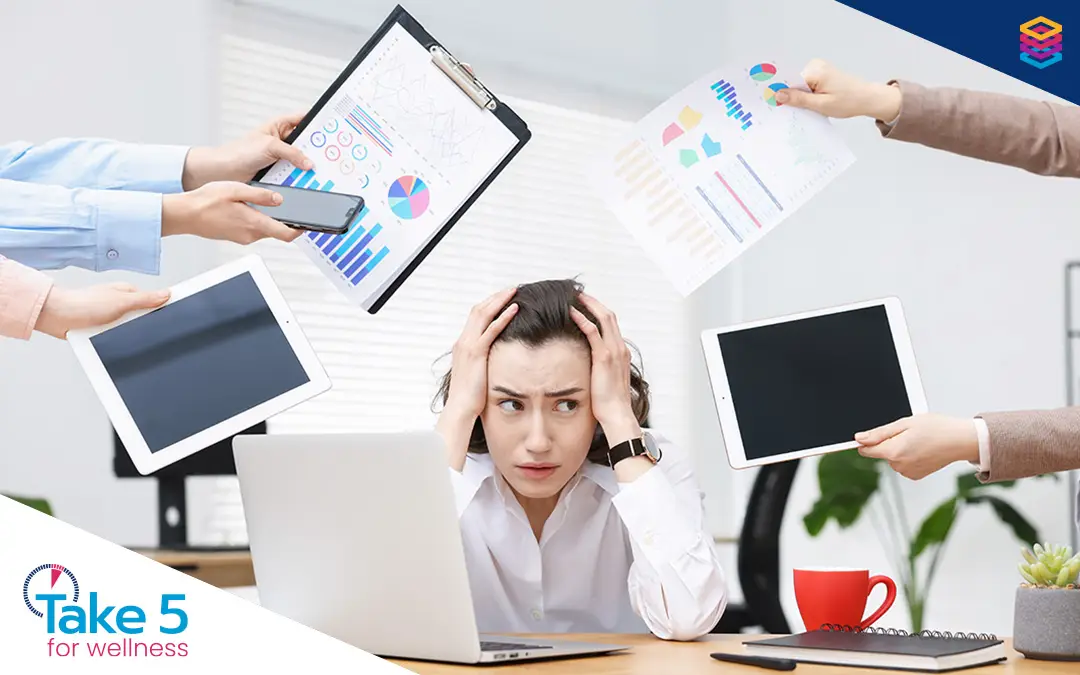Employers today know that mental health and work performance are inextricably linked—but how many know if their own work environment is undermining efforts to support mental health?
Small and medium enterprises (SMEs) are uniquely positioned—and challenged—to address workplace-specific psychosocial factors such as workload, autonomy and recognition.
“A healthy workplace integrates the three dimensions of employee health, corporate performance and corporate culture to create an environment where people have a sense of purpose and feel supported, and companies reach their objectives,” says Sarah Beaudry, Health and Wellness Advisor at Beneva.
The good news is that more businesses across a broader diversity of sectors are recognizing the value of a healthy workplace, says Maude Villeneuve, who has researched the psychosocial aspects of occupational health and safety for more than 10 years. “More companies are talking about how they can pursue growth while also taking care of staff,” she says.
Villeneuve recently authored a white paper geared to SMEs, Workplace Health Solutions, as part of her role as Research Coordinator for the Research Chair in Mental Health, Self-Management and Work at Université Laval. The Research Chair is funded by Beneva.
Overload: top risk factor
Among the six main psychosocial risk factors most likely to affect SMEs, workload consistently tops the list, followed by lack of decision-making power, insufficient recognition, organizational injustice, job insecurity and workplace harassment.
“People are burned out. But what does that mean? Work overload can be so ambiguous and unclear,” notes Villeneuve.
Empowerment and literacy are key to bring clarity.
“A lot of people feel disempowered. They wait for someone else to do something to help them, rather than help themselves as much as they can,” explains Villeneuve. “Employees need the tools to better understand that their workload is not necessarily their fault, but it is their responsibility to talk about what’s stressful, and to talk about it in a way that brings solutions.”
Concrete steps to help address overload include:
- learning to prioritize and organize tasks and when to say ‘no’;
- streamlining processes to eliminate redundancies;
- training in time management and delegation;
- updating job descriptions to clarify responsibilities; and
- assigning employees to teams that assess and champion one of the company’s annual objectives to improve workplace health (three to five objectives in total).
Pressures of a hybrid world
The hybrid workplace complicates employers’ efforts to mitigate psychosocial risks. While remote work improves work-life balance for some employees, for others it makes it harder to disconnect from work.
Remote work also increases the psychosocial risk of isolation. Even among employees who prefer remote work, feelings of isolation can slowly take hold and negatively affect mental health and productivity.
“We don’t have the small talk that we used to do at the coffee machine. We cannot truly see on a screen how another person is feeling,” says Beaudry. “That loss of connection with co-workers can have a big impact on the ability to cope with workloads.”
Action plan for SMEs
Unlike large corporations, SMEs rarely have an internal team dedicated to identifying psychosocial risks and developing a targeted action plan.
Employers can overcome that challenge by working closely with their benefits advisor and insurance provider. “Beneva’s commitment to mental well-being drives us to invest in helping employers understand and implement the changes that will make the biggest differences in their workforce,” says Beaudry.
Providers’ resources are often available to clients. For example, Beneva offers a survey that identifies and gathers information on the top psychosocial risks in a workplace, as well as educational sessions for employees.
Compared to large firms, SMEs’ flatter structures and closer relationships with employees allow for faster implementation of changes. However, it’s important not to move too fast. “Start with a couple of things that fit best with who you are and your team, and then in a few weeks, if it works well, add something else,” advises Villeneuve.
The smallest—and least costly—efforts can make the biggest difference. For example, a weekly meeting that begins with a simple “How’s everybody doing?” can have “an exponential effect on workers’ mental health,” emphasizes Villeneuve.
Closer look at leadership
Managers play an outsized role in promoting workplace health. They raise awareness, model behaviour, and serve as the first line of support for employees.
Managers are also one of three groups most vulnerable to psychosocial risks (the other two being young or junior workers and disadvantaged or minority employees).
In addition to tools and training for their own mental health and to become caring leaders, the white paper recommends peer networks (within the company or through local groups such as the Chamber of Commerce) to help managers avoid isolation and share solutions.
“We urge employers to reach out to their advisor and insurance provider to set the wheels in motion for a workplace health plan that will transform psychosocial risks into opportunities to improve performance at all levels,” says Beaudry.
Benefits Alliance thanks Beneva, a platinum preferred solutions provider, for participating in this article and a coming podcast on workplace health solutions (coming in November). Beneva’s white paper, Workplace Health Solutions, explores how to transform psychosocial risks into opportunities to enhance team performance and commitment.
